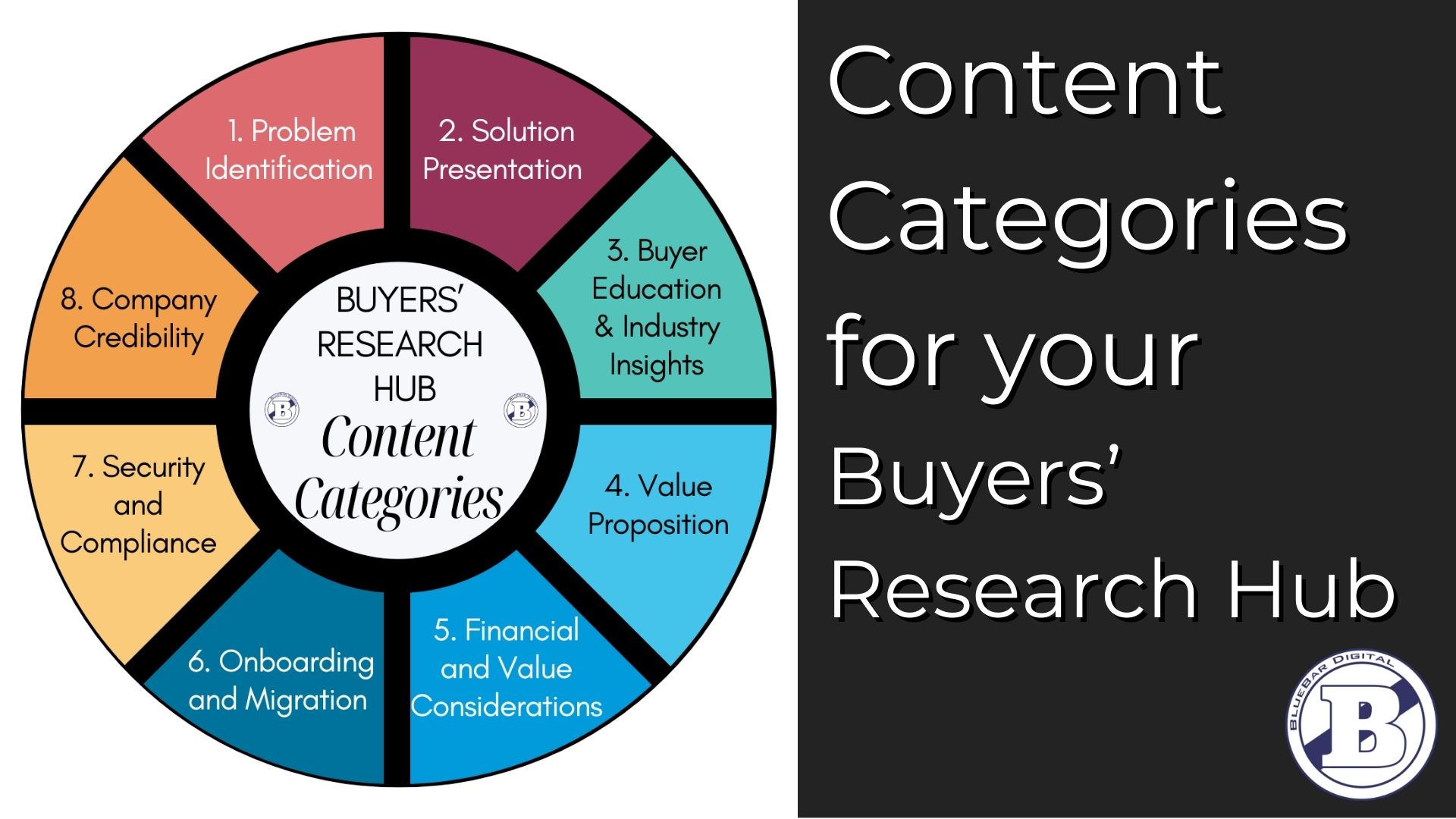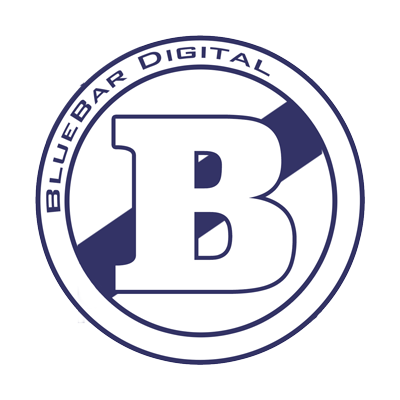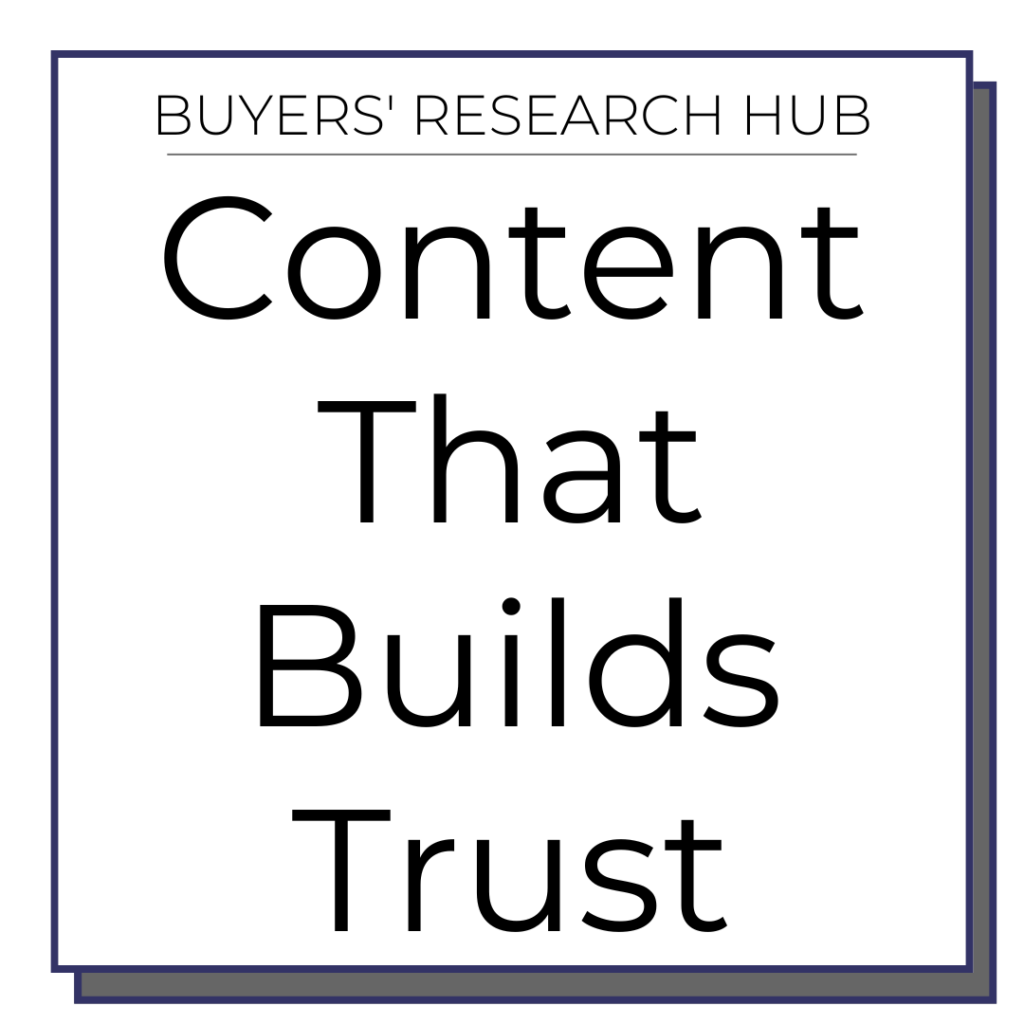The 8 Buyers’ Research Hub Categories

Imagine a buyer lands on your website with a specific problem in mind. They’re not ready to buy—they’re researching. Will they find what they need to decide you’re the right fit?
This is where a Buyers’ Research Hub becomes indispensable. By offering a structured repository of resources that align with your buyer’s journey, you can guide prospects from curiosity to confidence.
After much research and interaction with clients for over a decade, we have come up with the 8 catergories of information your buyers are looking for that make up the Buyers’ Research Hub, they are:
- Problem identification
- Solution Presentation
- Buyer Education & Industry Insights
- Value Proposition
- Financial Considerations
- Support, Onboarding & Migration
- Security & Compliance
- Company Credibility
Below, I break down the 8 essential categories every Buyers’ Research Hub should include—and how each one addresses your buyer’s needs at different stages of their decision-making process.
Categories and Nested Keys for the Buyers’ Research Hub
1. Problem Identification
Key #1: Problem-Focused Content
- Clearly articulate your understanding of your buyer’s pain points and challenges to demonstrate that you feel the buyer’s pain.
Key #2: Solution-Oriented Blogs or Articles
- Showcase how your solutions address those pain points effectively through blog posts, social posts, and videos.
- Share insights on the buyer “doing nothing” and the financial impact of taking no action.
Key #3: Visuals That Resonate
- Include graphics, infographics, or explainer videos to simplify complex problems and solutions.
2. Solution Presentation and Differentiation
Key #1: Product/Service Overview
- Describe your product or service; the problem it solves, the market or industry it serves, etc.
Key #2: Competitor Comparison
- Competitive analysis, positioning against other solutions your buyers are probably looking at.
Key #3: Benefit Breakdown
- Describe specific ways your solution addresses each pain point.
3. Buyer Education & Industry Insights
Key #1: Detailed Product Specifications
- Provide the detailed specs that your technical buyers demand.
- Scalability – How the product grows with the client.
Key #2: Industry Insights
- Industry Challenges
- Market Research Reports
- Emerging Trends
Key #3: Content to offer
- FAQs
- Buyers’ Guides
- Whitepapers & eBooks
- Webinars & Videos
- Assessment Tools
4. Proof of Value and Real-World Application
Key #1: Clear Value Proposition
- Ensure your website and materials communicate how you solve your buyer’s problem.
Key #2: Case Studies and Success Stories
- Include proof of past successes tailored to your buyer’s industry.
Key #3: Testimonials
- Highlight authentic feedback from similar clients.
5. Financial and Value Considerations
Key #1: Solution Pricing
- Price lists or, if not practical pricing structure – factors included in your pricing.
Key #2: Value Proposition
- ROI Calculators – Tool to demonstrate potential returns and quantitative results from real clients
- Cost of Ownership – Analyze total value over time.
- ROI and Metrics – Quantitative results from real clients.
6. Onboarding and Support Resources
Key #1: Getting Started
- Quick-Start Guides – Overview of the installation process or “what to expect” during your start-up phase
- Step-by-Step installtion/Deployment Guide – Instructions to get started.
- Timeline – Expected timeframes for setup.
Key #2: Migration
- Migration Checklist – What to prepare for and expect migrating to your solution
- Migration Services Offered – Description of services you offer
- Training Resources – Available support options.
Key #3: Technical Support & Training
- How your technical support programs work – Support levels, channels, pricing
- SLAs – Guarantees on support quality.
- Self-Service Resources – FAQ, knowledge base, and more.
- Training Options – Delivery options, what’s included.
7. Security and Compliance
Key #1: Data Security
- Explain your protection measures.
- Privacy Policies – Highlight data handling.
Key #2: Compliance
- Certifications – Display compliance standards.
8. Credibility and Future Vision
Key #1: The Company
- About Us – History, mission, and values.
- Leadership & Team – Profiles of key team members.
- Culture & Responsibility – How you contribute to the community.
Key #2: Social Proof
- Customer Testimonials – Videos or articles sharing clients’ successes
- Social Media – Links to easily connect with your social media channels
Key #3: The Future
- Future plans – release schedules, plans for new service offerings where practical
A well-crafted Buyers’ Research Hub doesn’t just inform—it builds trust, differentiates your solution, and moves buyers closer to saying yes
If creating a hub sounds overwhelming, don’t worry—you don’t have to do it alone. I can help you build a resource your buyers will rely on and will allow you to control the narrative.

